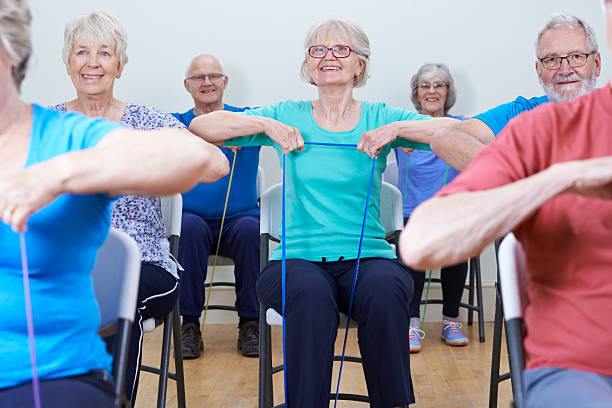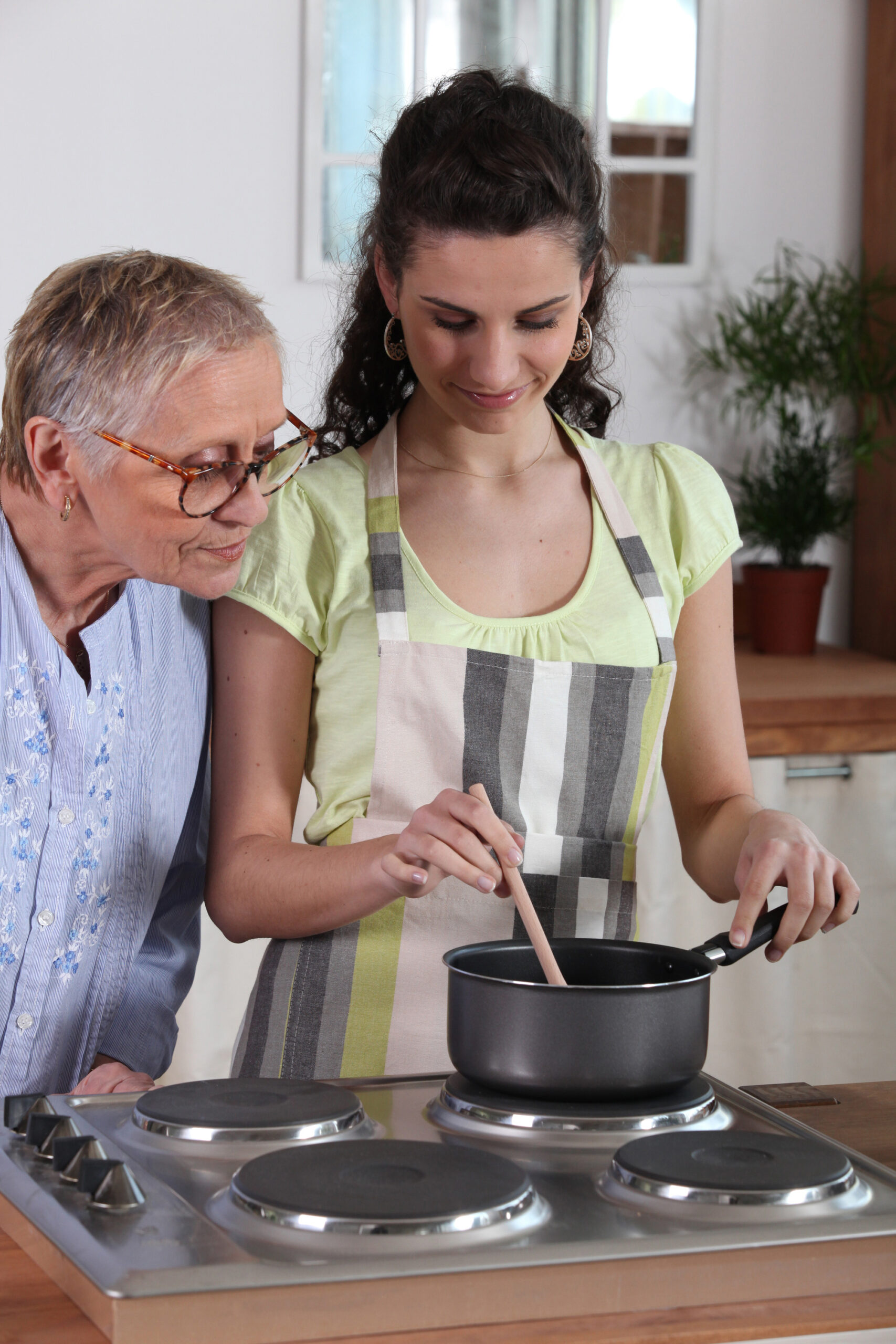Courtesy of SeniorDirectory.com | Jan 23, 2023
Source: Best Chair Exercises for Seniors and the Elderly
Are you suffering from limited mobility and poor balance? Do you feel that you are at risk of a dangerous fall? If so, this video is right for you!
Increase your range of motion through these easy chair exercises. Each exercise provides simple and effective ways to work on your strength, flexibility, balance, and confidence, all while seated in a chair. David Jacobs, a personal trainer with over 15 years of experience, took time with Alex Milzer of Senior Directory to provide a fantastic video. These chair exercises seniors can do daily from home without any equipment. David is a co-owner at Level 3 Fitness, located in Denver, Colorado. For more exercise videos, please visit Senior Directory’s fitness page.
Exercise #1 – Breathing
Breathing is the top chair exercise for the elderly because it is easy and effective. Sit on a chair with the back of your butt as far back as the chair will allow so that your back is fully supported. Feel free to use pillows or whatever supports you might require. The object is to get lots of oxygen into your body. Sit up nice and tall and inhale through your nose. Exhale through your mouth with more force than during regular breathing. Picture yourself blowing out birthday candles. This exercise is great for engaging your diaphragm and abdominal muscles.
Exercise #2 – Neck Contractions
Sometimes our breathing exercises lead us to tense up and hunch our neck and shoulders, especially for older adults. Place your hands on your knees and raise your shoulders up towards your ears. Then gently lower your shoulders. This helps to release any tension in our neck muscles, and it does not involve moving any joints in our necks.
Next, we want to rotate our shoulders and scapulae. The scapulae are the triangle-shaped bones at the top of our backs, and which are connected to our shoulders. Raise your shoulders again towards your ears, then rotate them towards your back. This pulls your scapulae together. Then gently roll your shoulders forward to the starting position. Do a couple of repetitions going backwards, and then reverse yourself and go forward.
We have 17 muscles connected to each scapula, and this exercise engages them all – 34 muscles activated in one simple exercise! These muscles are connected to our shoulders, arms, neck, back and chest. These neck contraction exercises, all done while seated in a chair, help us with mobility when we start using our arms. Don’t miss this one!
Exercise #3 – Three Dimensions
We can move our entire trunk, shoulders, arms and eyes while seated in this chair position. The room you are in, the chair you are seated on, and the joints and muscles that you have, are all three dimensional. They all have length, width and height to them. This exercise puts your body through all those dimensions.
First Dimension – Forward
Gently reach down, with both arms straight, towards the ground between your legs, as if you had dropped something. (Make sure your feet are flat on the floor.) Pick it up and then slowly raise both arms high above your head with it. Move slowly, within your own comfortable range of motion.
Second Dimension – Sideways
Pretend that you have dropped your napkin onto the floor at your side. Gently lean over, engaging your eyes to follow your hand as far down toward the ground as you can comfortably reach. Then do the same on your other side. You will be engaging your core muscles, your eyes and your balance as you do this exercise. As you reach down on each side, keep yourself stable and move slowly. Remember to breath! Breathe out as you reach down, and breathe in as you raise yourself up.
Third Dimension – Rotation
Imagine that someone behind you called your name, or offered you a cookie. Turn your head, eyes, neck, spine and shoulders to look behind you on one side. Then do the same on the other side. You may also reach out your hand, or both hands and arms, on either side for some extra stretching and rotation to get that cookie that you may have been offered. NOTE: David Jacobs does not mention cookies, but your humble author of this article does…oatmeal raisin for me, please. My Mother was a client of David’s for many years, late in her lifetime, and Mom enjoyed an occasional cookie.
Remember to take a nice deep breath before you turn, and breathe out as you turn to each side. These three dimensional movements from a chair are movements which we all use every day, in some way or another. We turn and reach for a seat belt. We bend to the side to pick something up or to pat Leo, your pet Schnauzer, on the head. We turn and reach for toilet paper or to scratch an itch on our back which we can only reach by rotating a bit.
Exercise #4 – Calf Raises
This one is really important for your ankles and toes. David places this exercise at the end of the chair exercise routine for a very good reason. It is the last thing that he wants you to do before you get out of your chair and move about with whatever you may be ready to be doing. You may have been seated for a while watching a movie or reading a book. Your feet and ankles need some attention after they have not been moving for some time.
Scoot up to the front of the chair’s seat so that you have more of your weight grounded into the floor. Tuck your heels back as far as comfortable towards the chair, so that your feet are under you and not way out in front of you. Place your hands on your knees. Gently and slowly raise your heels as high as you can, keeping your toes on the floor. You will be bending your toe joints for a good stretch.
Do this slowly so that you do not get cramps in your calves. If you feel up to it, lean forward and cross your arms onto your knees. This will put a little more weight on your legs and give you a little more of a workout. This can be done on a toilet or a chair, right before you stand up. Doing the calf raises while seated allows you to engage muscles which are deeper in your calves. This exercise is beneficial for your walking.
Exercise #5 – Chair Squats
Too often, when we see a chair that we are going to sit in, we just plop down into it. Gravity being what it is, all weight likes to drop. And that includes the weight that makes us who and what we are. When we plop down into a chair, we are not paying attention to muscle usage, balance or posture. The impact and jarring, when we plop, can be injurious to a senior’s body. We also miss out on a wonderful opportunity for some weight lifting. Weight lifting? You bet!
By slowing down when we begin to lower ourselves into a chair, we can gain strength which helps us get up from the chair and move around. When you are ready to sit in a chair, stick your butt out and slowly lower yourself to a seated position. Feel free to brace yourself by placing your hands on your knees, or reach back and steady yourself by placing a hand on the chair’s seat as you slowly lower yourself. The slower you go, the stronger you will get. This is excellent strength training, as your nerves and muscles really have to fire up to support your body as you slowly lower yourself, instead of plopping down onto your behind.
Develop this chair squat practice into a daily habit and, over time, you will get stronger rather than weaker and possibly injured from plopping. When you build the strength to sit down properly, you will find that you have the strength to get up out of the chair properly. The extent to which you plop will be the range of motion in which you will struggle to stand up. This works. It really does. This is a way to get stronger using a chair.
For more questions, please contact David at: https://level3fit.com/
https://seniordirectory.com/articles/info/best-chair-exercises-for-seniors to watch video











